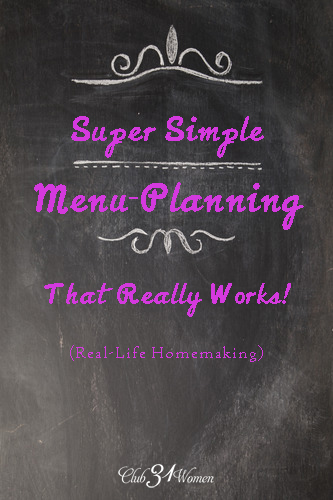5 Tips to Organize Your Home This Year
Are you looking for some tips to organize your home? Let this be the year you let go of clutter and enjoy peace.

The secret room, once used as a play space, has transformed into an overwhelming disaster of clutter. The bin of wooden trains I’m trying to pull out for a friend’s visit lies buried beneath piles of clutter.
How did it get like this again? I know exactly how. It happens over and over. Our family members change their room style and they stash the old decor in there. One child moves out and his things are stored in there temporarily. The room holds our extra paper towels and toilet paper packages. Off-season clothing is dug through and never returned to its original bin. A hamster passes and we keep the cage “in case.” Schoolwork is stashed from old courses.
Clutter is delayed decisions
It’s clutter. Almost all of it is delayed decisions. The fast, easy solution… in the moment.
The secret room is our family’s assigned place for clutter. It’s actually not a secret. It’s the unfinished attic space off what used to be our boys’ room when we first moved into this house 19 years ago. Even though it’s been a blessing, I never want it to be a hoarding space. Instead, I want to be a good steward of what God gives us. If we’re not using them, I want to bless someone else with them.
When it’s a mess like this I know it’s time to set a date on my calendar to “organize” it.” Here are some organizing tips if you have a space (or spaces!) like this.
Tip #1 Set a date
It won’t just happen. Even though I’ve been a professional organizer for over 15 years, I rarely ( feel like spending my time going through all my family’s forgotten treasures. Making decisions is tiring. Bending down to go in and out of the half-door is hard on my back.
I usually set the date based on my Organized Life Academy’s focus of the month. I plan “storage spaces” because most people have a space like this. This year “storage space” is scheduled for September.
Tip #2 Follow the steps
SPASM is the organizing acronym I’ve used for the past 15 years. It’s a silly acronym but next time your muscles spasm or your eye twitches (does yours do that?) you will be reminded to organize.
Sort
The first step is to pull everything out and sort it into categories. Like with like items. Don’t get hung up on category names. This step is meant to be done as fast as possible.
Sorting is vital for two reasons. First, you aren’t starting with hard decisions. Making decisions gets people stuck.
Second, after you sort you’ll be able to see everything you have in one place. For example, if I were to pull out one suitcase and try to decide whether to keep or get rid of it, I might get stuck. Is this the one that didn’t work? When was this one used last? But if I get all the suitcases from all over the house together in one place, NOW I can see what we have, compare, ask family members, and make decisions.
Purge
Now that everything is in categories, it’s time to go back to each pile and purge. I like to use the favorites method. Choose the things you USE and LOVE first. These are things you’ll keep for sure. Then, continue making decisions on the remaining items. Can you live without it? Can you bless someone else with it? Donate? Sell? Keep?
One of my favorite thoughts to keep front of mind during this step is, “I trust that God will always provide everything I need right when I need it.” This frees me to let go of more because my God is faithful, knows my needs, and always provides.
Assign Homes
Now that you have only what you are keeping, it’s time to assign homes to each item. We want what we keep to fit into the containers God has provided. These containers are our current home, our current closets, kitchens, shelves, drawers, etc.
Think of assigning homes as a puzzle. What I use often needs to be the most accessible. I like homes in categories and zones. For example, all beverages (teas, coffee, blender bottles, and attachments) are in the same drawer. All baking supplies are in one area of the pantry. All crafts are together in one cabinet or tub.
Set Limits
WARNING: One of the most common mistakes people make is to do this step first. Do not buy containers, cute new planners, shelving, baskets, or dividers UNTIL you get to this step.
Now that you’ve assigned homes to things, you know exactly what you need to contain them. This might be cute baskets. It could be a bookshelf, drawer, divider, or file folder. Setting a limit with a container or divider is aesthetically pleasing but also, when full, it’s the trigger that will alert you it is time to go through the organizing steps again. The limit has been reached.

Maintain
Unfortunately, most things require maintenance. Our health, laundry, the garden, and our organized spaces. The secret to maintaining is to tie it to something you already do. At tax time, purge your paper and file cabinet. When the season changes, do a full cleanout of your closet. Each time you put laundry away, do a small tidy. Before you put away groceries, clean out and organize the refrigerator. Every time you are at the gas station, purge the car of trash.
This brings us back to Tip #1 – get the maintenance appointments on your calendar.
Tip #3 Plan the Project
Once you decide where to start organizing, it’s time to plan the project. Start planning by using the same organizing steps. These organizing steps work for everything – organizing your mind, paper, closets, projects, and even your schedule.
- Sort all your project steps on paper.
- Purge by delegating, delaying, and deleting items until you’ve widdled it down to the tasks you want to do.
- Assign homes to each task on your calendar.
- Set limits on how much time you will spend on it. Do your best in that amount of time. Deadlines and time limits keep us focused.
- Finally, maintain the project by checking in and making any adjustments to your calendar regularly.
Tip #4 Get help
Telling yourself you “should” be able to do this and beating yourself up that your space isn’t the way you want, will not move you forward. There are several ways to get help as you declutter and organize your home.
- Our first source of help is to ask God. What does He say? Pray and ask Him. Pray for a special ministry to take your donations to or a family that needs exactly what you’ve been holding on to. Commit your work to the Lord, and your plans will be established. Proverbs 16:3.
- Read books. This one by Dana White and this one by Kathi Lipp are two good places to start.
- Ask a friend to help. Trade kids for a day. Share your skills.
- Hire help. This could be some strong high school boys to haul things up from the basement. It could be a professional organizer who walks you through every step. It could be an organizing coach who helps you create a plan and retrain your mind to let go of all the old stories you’ve been told or you tell yourself.
- Join a program where a community of women come together in a safe place to declutter and organize their homes and lives like Organized Life Academy. Learning the steps and practicing the skills over and over helps.
Investing in yourself is one of the most valuable things you can do. The skill of organizing, trusting God, and being content with where God has you now and the container he’s given you, are skills that will filter through all areas of your life.
Tip #5 Grow Through the Process
What is God teaching you while you organize? Where is there an opportunity to grow? How can you make it fun? Where can you see God at work throughout this journey? Maybe your organizing time can become your most blessed prayer time. Each time you touch an item you can talk with God about the person to whom it belongs.
Be encouraged, my friend. As you declutter earthly treasures, focus on storing up heavenly treasures. The trade-off is worth the energy and time spent making decisions on what to keep and what to let go of.
“But store up for yourselves treasures in heaven, where moths and vermin do not destroy, and where thieves do not break in and steal. For where your treasure is, there your heart is also.” Matthew 6:20–21 (NIV)





